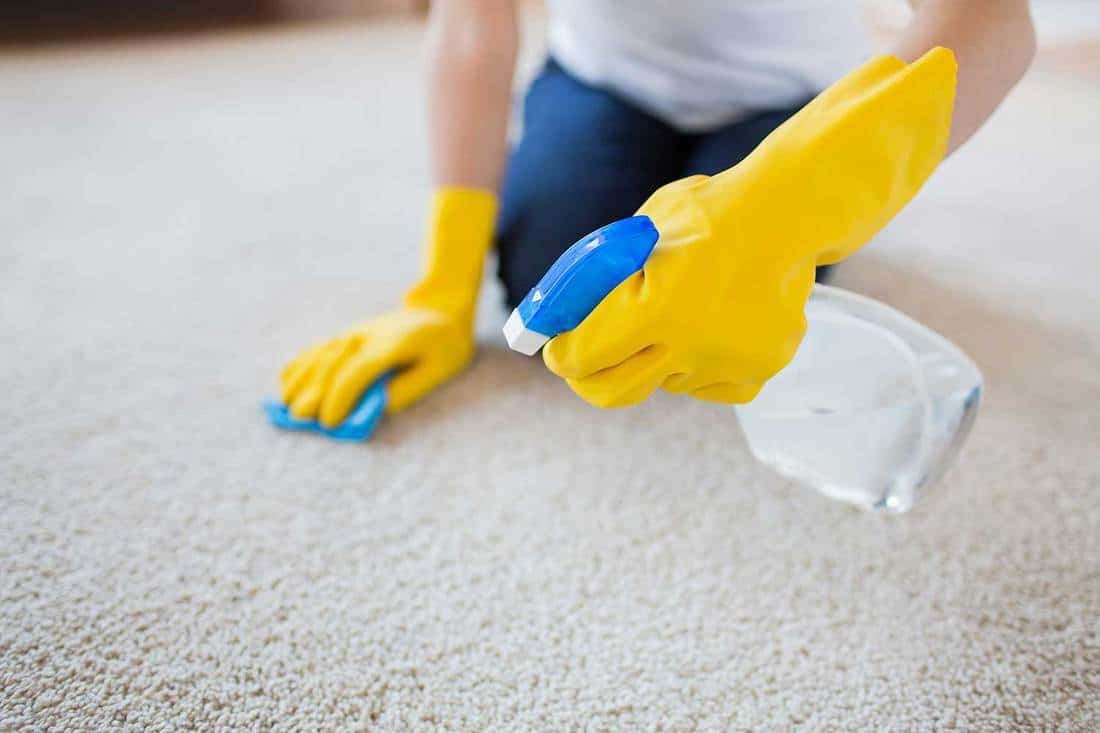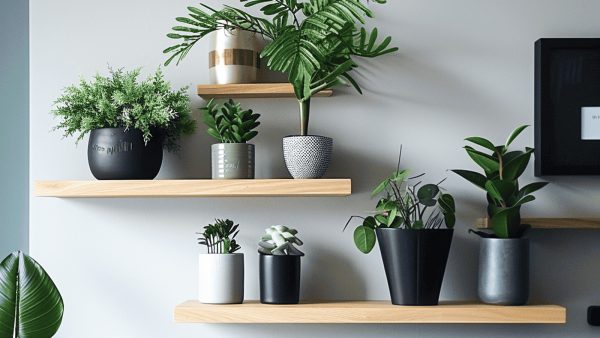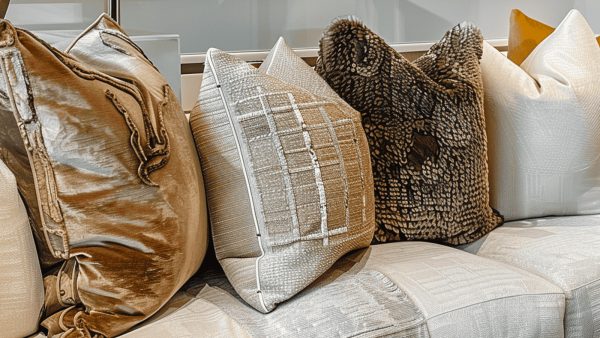Whether you have experienced a flood, a leak, or a simple spill on your carpet, you may be questioning what the best and fastest way is to dry your carpet so that you don't have to replace it. We have researched the ways to rescue your carpet and have found the best fixes for you.
The carpet can be rescued if the water damage class is one or sometimes two. Make sure to turn off any electrical currents to the room for safety. Sanitize and dry the carpet within 72 hours to avoid mold and mildew issues. Use the following steps to resolve a wet carpet. If the water damage is minimal, then it is possible to use just a few of the next steps. A flooded carpet will need all of the steps followed.
- Turn off electricity to the room before stepping onto any wet or soaked carpet.
- Remove furniture
- Remove the moisture
- Take out the damaged carpet pad.
- Create Airflow and dehumidify
- Put back in the dried or new carpet pad.
- Reinstall the carpet over the carpet pad
- Steam Clean
- Use baking soda for smells.
- Sanitize the Room
- Sanitize the furniture
- Bring the furniture back into the room.
While this seems like a lot, stay with us while we walk you through each step in detail.
![Photo of Janitor Heating a Wet Carpet Using Dry Vacuum cleaner, How To Dry A Wet Carpet [12 Steps]](https://homedecorbliss.com/wp-content/uploads/2021/01/How-To-Dry-A-Wet-Carpet-12-Steps.png)
Safety
Before starting, shut off the power to the room if possible or turn off the house's main breaker. Have an electrician to turn off the power if the room with the electrical panel is flooded.
Once the power is off, remove any extension cords and power strips from the floor and unplug any electrical appliances, including furnace, washer, dryer, and HVAC.
Types of Water Damage
There are three main water damage classes determined by the Institute of Inspection, Cleaning, and Restoration. The class identifies what toxins may be in the water.
The class determines whether the damage can be fixed simply by drying and sanitizing the carpet or using professional cleaners. It can also help you decide if you need to throw out the carpet instead of replacing it.
Class One
Freshwater damage is considered Class One. This damage is caused by clean water from broken pipes from supply lines, bathtub, sink, or appliance overflow.
This is considered clean water, which is the easiest of the classes to clean up and does not have toxins.
Class Two
Category two is greywater damage that is usually water from toilets or washing machines, where the water isn't fresh but does not have many toxins.
To correct damage from class two damage involves disinfecting thoroughly as this class can cause long term damage later on.
Class Three
Class three is blackwater damage. Blackwater is sewage, floodwater, seawater, and river water.
This damage requires immediate resolution, and the items involved will need considerable disinfecting and potential replacement.
Reasons To Dry
If the carpet is not dried out correctly, the dark, small space between the carpet padding and floor, which is now a moist area, creates an environment where mold and mildew can form. Mold and mildew will start to develop within 24 to 48 hours once exposed to water.
Mold will quickly ruin the surface that it grows on and is smelly. It will need to be killed at the source to prevent new spores.
Check for any musty or sour smells coming from your carpet. Look for discoloration on the carpet or padding, and watch if anyone starts experiencing allergic-like symptoms, such as sneezing or coughing.
Moisture Removal
There are multiple ways to remove moisture.
Wet/Dry Vacuums
Wet/dry vacuums will work for a minor wet spot. They do not work well for a flooded room as there's too much water, and it would take too long to remove the water with them.
We may include affiliate links and curated AI content to highlight top design styles.
Click here to view this vacuum on Amazon.
Extractors
Extractors remove more water than wet/dry vacuums do. Use an extractor to remove large amounts of water. You can either buy one or rent one.
Take your time moving the extractor across the carpet to remove as much water as possible.
Click here to see this extractor on Amazon.
Carpet Pad Inspection
After all of the water has been extracted, peel back the carpet. Be cautious of the nail strip. See if the carpet pad will need to be removed and dried or if it's possible to leave it.
If you must remove the carpet pad, cut it out in strips. You can try to dry it outside if it's hot enough. Or you may decide to replace the carpet pad.
Do not put the new or dried carpet pad back in until the rest of the carpet is sanitized and dry.
Lay the carpet back on the floor without the carpet pad. Then move forward with the airflow steps below to finish drying out the carpet.
Here's a video with tips on removing part of the carpet pad without replacing the carpet.
Create Airflow
Use fans and dehumidifiers to remove the rest of the moisture. Keep the room at 75 degrees Fahrenheit temperature or less as a higher temperature will promote any bacterial growth and cause mold issues.
A commercial fan will dry out the room faster as it will move air more efficiently than the basic household fan.
Click here to see this fan on Amazon.
A dehumidifier will help remove the last of the moisture.
Click here to view this on Amazon.
Clean The Carpet
Before the carpet becomes completely dry, go ahead and clean it. This will help remove any smells and kill any mold or mildew trying to take hold.
Use a carpet cleaner or a cleaning solution.
Click here to see this cleaner on Amazon.
Click here to see this solution on Amazon.
Length Of Dry Time
The length of the time it will take the carpet to dry depends on the type, level of dampness, humidity levels, and temperature.
Here are the average time lengths to get an idea for a low pile carpet in a dry climate.
A flooded carpet can take between 3 to five days to dry. If it is partially wet it, will take between 12-24 hours. Just damp will average between 1 to 3 hours.
A professionally cleaned carpet takes between 4-8 hours. If using a carpet cleaning rental, it may take between 6 and 12 hours. If the carpet has been steam cleaned, it will average 2 to 4 hours to dry.
Sanitize The Room
Make sure to sanitize the carpet and any furniture that was in the room. Use an anti-microbial cleaner to kill any spores that may have started due to the water contamination.
Click here to view this product on Amazon.
Will Carpet Padding Dry?
Carpet pads are made up of foam, rubber, or fiber, all of which work as sponges when they get wet. If the section of padding is removed in time and dried completely, the padding may be rescued. The general rule of thumb is to replace the padding as it is hard to dry out and can house mold very quickly. Mold spores and mildew can start growing within 24 to 48 hours.
Padding is inexpensive, so it is not worth the time to try to reclaim.
Click here to view this carpet pad on Amazon.
How Do You Know If Your Carpet Is Fully Dry?
Pay attention to any smells. The carpet can feel dry but still have some dampness that is not sensed by touch. A damp spot will exhibit a musty smell. The scent can be barely detectable, so make sure to pay attention if anyone says they smell something and handle it quickly before it builds to something else.
Besides the smell, look for any discolorations of the carpet color and any sudden onset of breathing difficulties such as asthma.
How Long Can Water Sit on Carpet?
Start drying or replacing immediately as mildew and mold start developing within 24 to 48 hours.
Is Carpet Ruined If It Gets Wet?

Take a look at the type of damage, how long the carpet was wet and if the sanitizing process worked to determine if the carpet is ruined. If the carpet hasn't been wet for long and with class one damage, it is possible to rescue it.
If the carpet was wet longer than 72 hours, replace it. Mold grows within 24 to 48 hours and is difficult to remove.
How Do You Get A Damp Smell Out Of Carpet?
Before removing any smells, make sure they are not caused by mold and mildew and that the carpet is completely dry. Once the carpet is completely dry, and the water problem is resolved, then move forward to odor control.
Vinegar
To remove the musty smells out of the carpet, mix one cup of vinegar with two cups of hot water and mist over the carpet with a spray bottle. Do not over-saturate as you do not want to trigger any mold growth. Let sit overnight and vacuum.
Click here to view this vinegar on Amazon.
Baking Soda
Baking Soda excels at removing moisture and removes the odor.
Take a pack of baking soda and sprinkle it all over the wet area. After up to two hours, then vacuum the baking soda up with a narrow nozzle on the vacuum cleaner. It may require a few passes to get all of the baking soda up.
Click here to view this baking soda on Amazon.
Hydrogen Peroxide
Mix one part of hydrogen peroxide with five parts water and spray on the carpet's back to neutralize the smell and any mold spores.
Click here to view this product on Amazon.
Foam Carpet Shampoo
Vacuum the carpet, then apply the foam with a sponge to control the saturation amount. Let the carpet dry, then vacuum again.
Click here to view this foam on Amazon.
Click here to view "Carpet Smells Like Stinky Feet? Here's What To Do" for more ideas on how to resolve smelly carpeting.
Furniture Recovery
Before putting the furniture back into the room, make sure to sanitize and dry the pieces out entirely so that they don't drip on the freshly rescued carpet.
Wood Furniture
Take outdoors to dry if possible. Remove drawers and doors for easy cleaning. Wash with a damp cloth with a mild soap and water solution, then rinse with a damp cloth and clean water.
Upholstered Furniture
Couches and fabric are usually hard to rescue. If it has been sitting in water for a long time, it's best to replace it. To restore it, strip it down to the frames. Disinfect the frames, then let the frame dry out. Once it's dry, fix any loose joints.
Mattresses can be rescued if the water was a class one. To salvage it, clean it and put it in the sun to dry with supports to allow airflow underneath it. If there's a musty scent after it dries, throw the mattress out.
Linens
Window treatments are difficult to rescue as the floodwater can create mildew that disinfectants may discolor the fabric. Bed linens can be washed if the care label states that chlorine bleach is allowed. Wash each linen separately in the hottest water allowed according to the care label. Each linen will need to be washed a second time in hot water with the chlorine bleach. Once finished washing and determining if the linen is safe, dry as usual.
Do not use hot water or bleach on wool.
In Closure
![Photo of Janitor Heating a Wet Carpet Using Dry Vacuum cleaner, How To Dry A Wet Carpet [12 Steps]](https://homedecorbliss.com/wp-content/uploads/2021/01/Photo-of-Janitor-Heating-a-Wet-Carpet-Using-Dry-Vacuum-cleaner.jpg)
A flooded carpet does not necessarily mean a ruined carpet. With quick actions to move the air, dry out, and sanitization the carpet can be saved. A dehumidifier and high powered fans will take care of the air, while an extractor will remove all the water. Sanitizing the carpet will help with any mold that is starting to take hold. Once the furniture has been sanitized, it can be brought back into the room.
If the carpet needs to be replaced. Read our article "Bedroom Carpet Inspiration: 35 Photos And Design Tips" for ideas for the bedroom.















